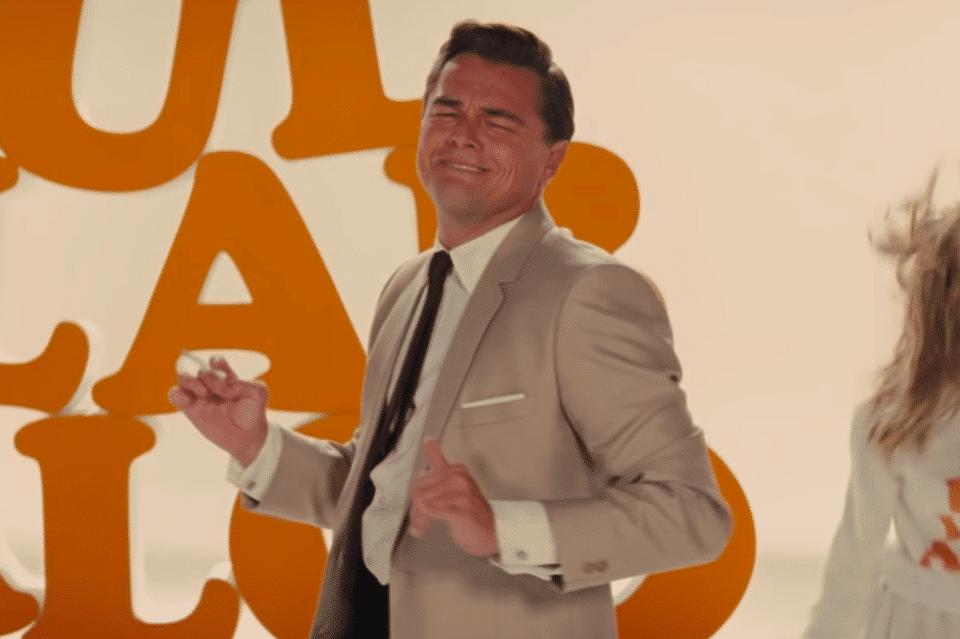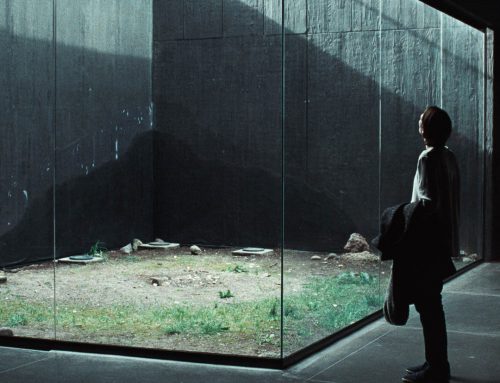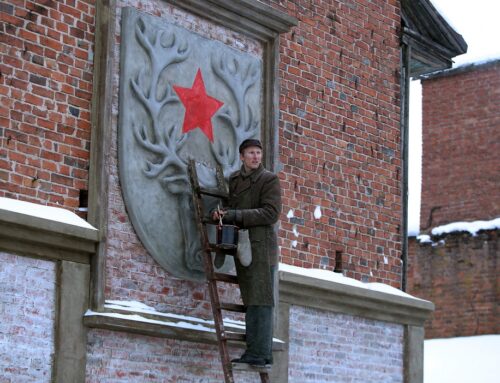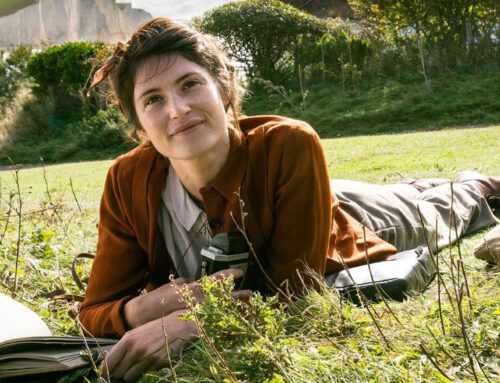The 9th film by Quentin Tarantino was always going to be one of the most anticipated of 2019. Described as his most personal, it’s never so distinctively Tarantino as audiences will expect.
Aging TV cowboy Rick Dalton (Leonardo DiCaprio) mopes aimlessly about Hollywood in hopes of a career resurgence, ably assisted by his long-time stuntman, driver and best and only friend Cliff Booth (Brad Pitt). Otherwise lounging in his pool across from neighbours Sharon Tate (Margot Robbie) and Roman Polanski (Rafal Zawierucha), the spectre of the star’s 1969 murder hangs heavy over proceedings as Rick and Quentin cycle through the iconic mainstays of one of Hollywood’s great ages right before the sixties came crashing down.
When Charles Manson eventually died, a number of outlets classily opted to instead run Tate’s obituary. It is in this spirit that much of OUATIH transpires. This production has copped some criticism, it’s most undue, for proffering Robbie a fraction of the lines of her main co-stars. Engaging with ample screen-time, her presence too felt strongly in her absence, what Robbie manages with a glimmer, an aside, a dance, a smile, here resonates more than nearly every A-lister giving it their best and there are a lot of Hollywood legends herein.
Invoking an idea of who Tate was and what she and her passing represented for Hollywood and 1960’s culture is deftly managed by star and Director, not by highlighting her death but what was lost in how she lived. Related and conspicuous by their absence, Roman Polanski and Manson cumulatively feature in about a minute of screen time. Factors in Tate’s story no question, the message is however clear; she and that she personified was not defined by others but that which this world is lesser for without her presence.
With Tarantino adopting a loose-narrative approach more than in any other feature since Pulp Fiction, it best serves Robbie’s in these respects stirring turn who would be the best thing about this movie but for Brad Pitt.
For how famous Pitt is he’s a curiously underrated performer, better known broadly for films that highlight his looks rather than talent; that film we do not talk about being one of a few notable exceptions. Here imparting ideals of classic Hollywood cool better than Damian Lewis, here depicting Steve McQueen, it’s personification, Pitt also navigates one of the more contentious aspects of this outing; Tarantino’s more than implicit commentary on the Me Too movement and it’s like.
Tarantino started developing this project before scandals including those centred around Harvey Weinstein emerged. This and any other feature however must fairly be viewed in the context of its release. ONATIH being the first Tarantino flick in a long time where Weinstein does not feature in the credits and too being released following reports as to the Director’s own on-set behaviour, that which occurs herein regardless of when it was initiated can fairly be read as a perspective on much of that underlining this most prominent shift in Hollywood in years past.
The sympathy one has for Booth may likely depend on one’s perspective of a very confronting episode before the era in which we first meet him, exact details of which are left deliberately ambiguous. Whether Booth is the guilty party in an act of violence against a woman is not the only consideration to many involved in this production however; Tarantino himself may not have a view. What evidently matters to those whose names are in the credits is whether or not guilt can or should be ascribed too Booth under the circumstances and how this will frame Booth in the minds of different viewers.
A frequent critique of the Me Too movement being the imputation of guilt absent a legal ruling, this segment and Booth’s very inclusion is Tarantino’s riposte to his own detractors, here choosing to frame an avatar for many implicated as a figure concerned with his companions, their welfare and who, as far as we see it, only enacts violence following perceived threats to his own safety and that of others.
The segment most purporting to be a commentary on violence, these subjects entire and too intended to elucidate on Booth is without question the film’s most violent. This author will not be spoiling the ending, nor should it be spoilt for anyone. Suffice to say, Tarantino vividly posits, as he has in so many other films, Inglourious Basterds and Django Unchained foremost among them, that the only appropriate response for those of apparent nobleness when confronted with extreme violence is violence to match or exceed it. Going back to still his best feature, Tarantino confronts whether Booth is the tyranny of evil men, the shepherd, or if he’s just tryin.’
Those involved have tried to keep this ambiguous. Not everyone is going to see it that way and many viewers will find the inclusion of that which purports to be vague as regards Booth, in no small part for the reasonable reading that his guilt is heavily implied, fundamentally disquieting.
Having said all this, OUATIH works on several significantly more basic levels. In one of the film’s most publicised scenes we see Dalton flame-throw some Nazis in one of his hits past and as much as you read into OUATIH so much of this is still but a backdrop for Tarantino righteously doing things like, well, flame-throwing Nazis.
As good as this sequence was, it’s notable that it was one of the only scenes bearing Tarantino’s skill for visual flourishes, much the rest of the film being very traditionally shot. There are thankfully exceptions; first among them a creepy, tension-inducing tumble down the rabbit hole as Booth visits the ranch replete with Manson’s disciples.
Turning to one of the other controversial aspects of the film; Bruce Lee. Mike Moh’s approximation is very entertaining, with the character’s framing entire being criticised for depicting the figure mockingly. Yes this film is an avowedly fictionalised version of real-life events, this scene too being framed as one character’s own recollection via flashback; but that doesn’t quite hold sway.
OUATIH, a loose travelogue through the most and least glamorous fixtures of sixties Hollywood, either depicts environments or amalgams of Hollywood royalty through broad, encompassing brushes with but winking references to specific figures, or presents real-life persons. Dalton himself draws from the likes of Rawhide and Bonanza iconography, with DiCaprio, almost a match for Pitt, cycling between tinseltown fixtures and in one case, in an unquestionable highlight, doing so alongside Luke Perry in what is the actor’s last performance.
This is done most elegantly in Tate’s case, with Robbie’s depiction being fairly that of a character or version of Tate nay an exact replica. Yet Tarantino chose to take the same approach with Lee and to the extent (if at all) that he has largely departed from a faithful, knowable depiction of Lee he has done a production which purports to show a spirited yet exaggeratedly accurate account of events and figures past a disservice.
Dripping with the Director’s commentary more that most if not all of Tarantino’s productions though conversely and significantly absent so much of his signature stylings, OUATIH’s uncharacteristically Tarantio-esque narrative won’t have trouble finding as many awaiting audiences as it will likely alienate.
Once Upon a Time… in Hollywood is in cinemas, which screened as part of the Melbourne International Film Festival, is in cinemas from August 15 and screens as part of Perth Openair Cinema on September 28, as part of Sunset Cinema Brisbane on October 6 and October 12, as part of Melbourne Openair Cinema on October 9 and 15, as part of Sydney Openair Cinemas on Friday November 1, as part of Moonlight Cinema in Melbourne and Sydney on November 29 and Perth on December 1, as part of Westpac OpenAir Cinema on January 11, as part of Mov’ In Bed on January 16 (Melbourne), January 29, March 1 and March 11 (Sydney) and April 7 (Brisbane), as part of Canberra Openair Cinema on January 21, as part of the Cottesloe Film Festival on February 8 and as part of Sunset Cinema North Sydney on February 12, 2020
on Falkenscreen







